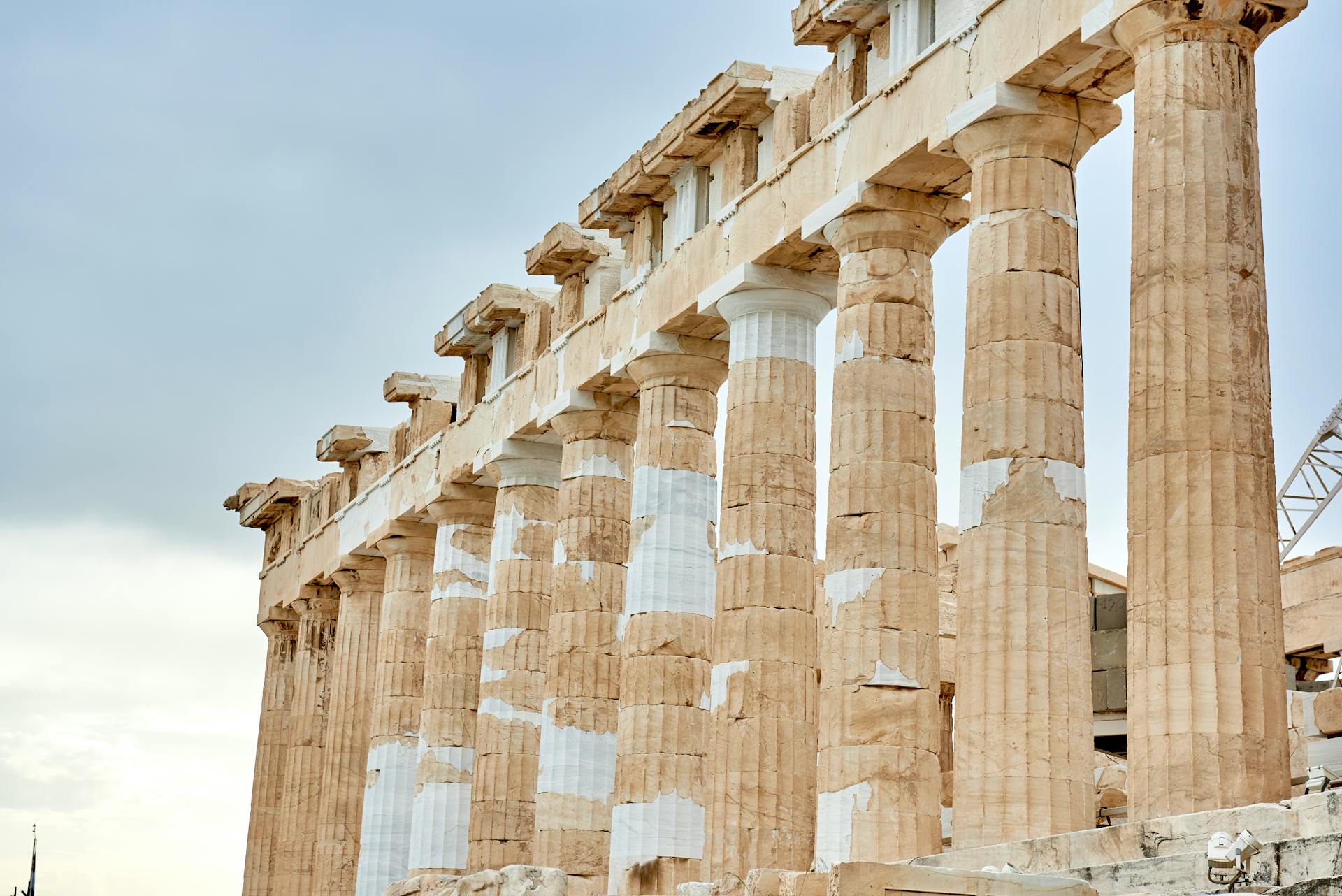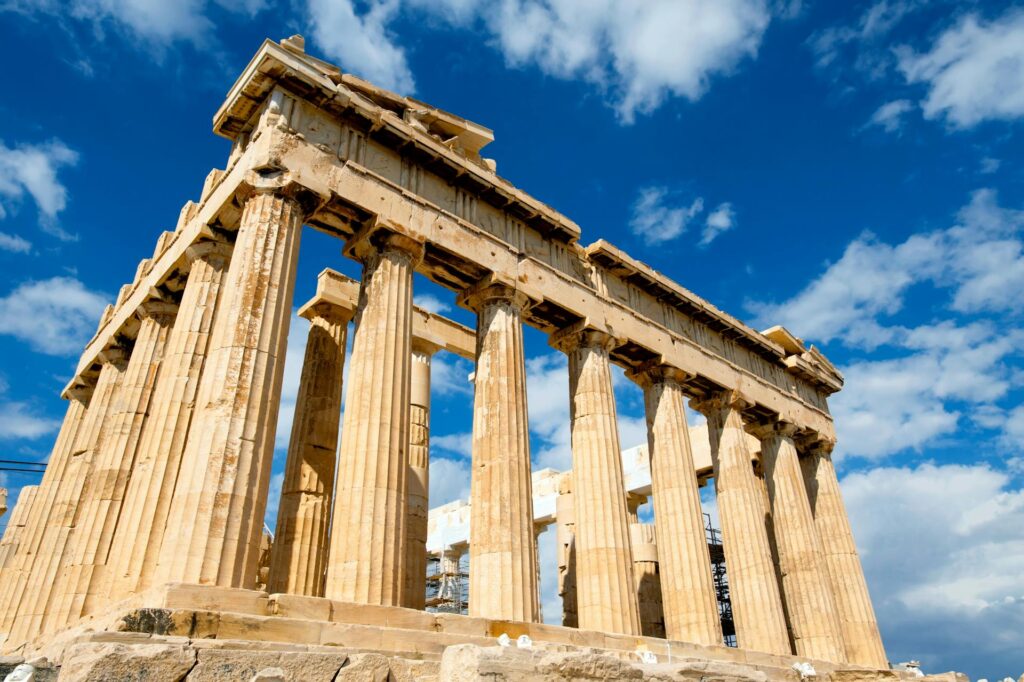Have you ever wandered through a city and been struck by the grandeur of its buildings, only to wonder about the origins of such design? If you’ve ever marveled at the symmetry and beauty of old structures, you’re not alone. Many are drawn to the elegance of Ancient Greek architecture, a style that continues to captivate us even today. But what is it about these ancient designs that still speaks to us? And what lessons can we learn from them as we build our modern world? Let’s dive into the language of columns and discover what the ancients can teach us about architecture.
The Timeless Appeal of Ancient Greek Architecture
Ancient Greek architecture is renowned for its elegance, balance, and harmony. At its core are three orders: Doric, Ionic, and Corinthian. Each order has its own distinct characteristics, yet they all share a common goal: to create structures that are as functional as they are beautiful. The Greeks believed that buildings should reflect the order of the universe, a philosophy that resonates with us even today. The Doric order, for example, is known for its sturdy, plain columns, symbolizing strength and simplicity. The Ionic order, with its scroll-like volutes, suggests a more delicate and ornate design. Finally, the Corinthian order, the most elaborate of the three, showcases intricate carvings that mimic natural forms.
The design principles of Ancient Greek architecture haven’t just influenced the past; they continue to shape our present. When you look at modern buildings that evoke a sense of grandeur and timelessness, you’re witnessing the enduring legacy of Greek design. This influence is evident in countless structures, from government buildings to iconic landmarks around the world. And while modern architects sometimes face criticism for being too focused on aesthetics over practicality, as discussed in The Problem with Modern Architecture, the balance achieved by the Greeks serves as a guiding light.
The Functionality Behind the Beauty
One of the most fascinating aspects of Ancient Greek architecture is its focus on functionality alongside beauty. The Greeks were masters of creating structures that were not only visually stunning but also incredibly practical. Temples, for instance, were designed to be both places of worship and architectural marvels. The Parthenon is a prime example, blending functionality with aesthetic appeal, and using optical illusions to correct visual distortions and create a sense of perfection.
This emphasis on functionality is something that modern architects can learn from. While the aesthetic appeal of a building is important, its usability is equally crucial. As we see in St. Peter’s Basilica Architecture, successful designs often balance these two aspects, ensuring that beauty does not come at the expense of practicality. By taking a leaf from the Greeks’ book, contemporary architects can create spaces that are not only stunning to look at but also serve their intended purpose effectively.
The Language of Columns: More Than Just Support
Columns are one of the defining features of Ancient Greek architecture, but they serve more than just a structural purpose. Each column tells a story, expressing a particular aesthetic and philosophical idea. In Greek buildings, columns are like the words of a language, each contributing to the overall message conveyed by the structure. The Doric column, with its simple, unadorned design, speaks of strength and stability. It’s no surprise that this style was often used in temples dedicated to male gods, reflecting masculine strength.
The Ionic and Corinthian columns, on the other hand, convey a different message. Ionic columns, with their graceful volutes, suggest elegance and sophistication. They were often used in temples dedicated to female deities, highlighting feminine grace. Corinthian columns, with their elaborate capitals adorned with acanthus leaves, symbolize opulence and beauty. This diversity in column styles allows architects to convey different messages through their buildings, a lesson modern architects can apply to communicate their own design intentions.
The Influence on Modern Architecture
Ancient Greek architecture’s influence extends far beyond its own time, leaving a lasting impact on modern architecture. This is evident in numerous iconic structures, ranging from the neoclassical style of the White House to the art deco elements of the Empire State Building. The Greeks’ emphasis on symmetry, proportion, and harmony remains a cornerstone of architectural design today. In an era where sleek, minimalist designs often reign supreme, the grandeur of Greek-inspired architecture continues to captivate and inspire.
However, it’s important to strike a balance between innovation and tradition. While the elegance of Greek design is timeless, architects must also consider the needs and desires of the present. As discussed in Top 15 Architectural Wonders of the 21st Century, contemporary architects are tasked with blending the old with the new, creating structures that respect tradition while embracing innovation. By doing so, they can ensure that the legacy of Ancient Greek architecture remains relevant in our rapidly evolving world.
The Role of Temples in Greek Society
To truly understand Ancient Greek architecture, it’s important to consider the cultural and social context in which these structures were built. Temples were not just religious sites; they were also centers of community life. They served as focal points for social gatherings, celebrations, and important civic events. The design of these temples reflected their significance, with grand facades and intricate details that conveyed a sense of reverence and awe.
This aspect of Greek architecture highlights the importance of creating spaces that foster community and connection. In today’s world, where urbanization and technology can sometimes lead to isolation, the need for communal spaces is more important than ever. By drawing inspiration from the Greeks, modern architects can design spaces that encourage interaction and engagement, helping to build stronger, more connected communities.
The Importance of Proportion and Symmetry
Proportion and symmetry are central to Ancient Greek architecture. The Greeks believed that the human body was the ultimate model of perfection, and they sought to reflect this ideal in their buildings. This pursuit of proportion and symmetry is evident in iconic structures like the Parthenon, where every element is carefully calibrated to achieve a sense of balance and harmony.
The importance of proportion and symmetry is a lesson that modern architects can take to heart. By paying attention to these principles, architects can create spaces that are not only visually appealing but also psychologically comforting. Buildings that are well-proportioned and symmetrical tend to feel more stable and harmonious, creating a sense of well-being for those who inhabit them.

The Legacy of Greek Theatre Architecture
Theaters are another notable aspect of Ancient Greek architecture. These open-air structures were designed to accommodate large audiences, reflecting the importance of drama and performance in Greek culture. The Greeks’ innovative use of acoustics and sightlines ensured that everyone in the audience had a clear view and could hear every word, enhancing the overall experience.
Modern architects can learn a great deal from the Greeks’ approach to theater design. By prioritizing the user experience, architects can create spaces that enhance the functionality and enjoyment of a building. Whether designing a concert hall or a lecture theater, the principles of Greek theater architecture can serve as a valuable guide, ensuring that the space is both functional and engaging.
The Enduring Influence of Greek Ornamentation
Greek architecture is renowned for its use of ornamentation, from the intricate carvings of Corinthian columns to the decorative friezes that adorn temple facades. These embellishments serve not only as decorative elements but also as symbols of cultural and religious significance. The Greeks used ornamentation to tell stories, convey messages, and celebrate their achievements, making their buildings not just functional spaces but also works of art.
Incorporating ornamentation into modern architecture can add depth and meaning to a building, transforming it from a mere structure into a symbol of cultural identity. By drawing inspiration from the Greeks, architects can create spaces that are not only beautiful but also rich in meaning and significance, resonating with those who use them.
The Sustainability of Ancient Greek Architecture
One often overlooked aspect of Ancient Greek architecture is its sustainability. The Greeks were resourceful builders, using locally sourced materials and designing structures that were well-suited to their environment. This approach not only minimized their environmental impact but also ensured that their buildings stood the test of time.
In an era where sustainability is a pressing concern, the Greeks’ approach to architecture offers valuable lessons. By prioritizing local materials and designing with the environment in mind, modern architects can create buildings that are not only beautiful but also sustainable. This approach not only benefits the environment but also enhances the longevity and resilience of the structures.
The Role of Public Spaces in Greek Architecture
Public spaces played a crucial role in Ancient Greek society, serving as venues for social interaction, political discourse, and cultural exchange. The design of these spaces was carefully considered, reflecting their importance in fostering community and civic engagement. The agora, for example, was a central gathering place where citizens could meet, trade, and discuss important issues.
The Greeks’ emphasis on public spaces is a lesson that modern architects can apply to urban design. By creating spaces that encourage interaction and engagement, architects can help build stronger, more connected communities. Whether designing a park, plaza, or pedestrian-friendly street, the principles of Greek public space design can serve as a valuable guide.
The Influence of Greek Architecture on Religious Buildings
Greek architecture has had a profound influence on religious buildings throughout history. The grandeur and majesty of Greek temples have inspired the design of churches, mosques, and synagogues around the world. The emphasis on symmetry, proportion, and ornamentation found in Greek architecture is evident in many religious structures, including the iconic designs of church building interiors.
This influence highlights the enduring legacy of Greek architecture in shaping our spiritual and cultural environments. By drawing inspiration from the Greeks, architects can create religious spaces that are not only functional but also inspiring, fostering a sense of reverence and connection.
Conclusion
Ancient Greek architecture is more than just a relic of the past; it’s a rich source of inspiration for the present and future. Its emphasis on balance, harmony, and functionality offers valuable lessons for modern architects, guiding them in creating spaces that are both beautiful and practical. By embracing the principles of Greek design, we can build a world that is not only aesthetically pleasing but also sustainable and connected, ensuring that the legacy of Ancient Greek architecture endures for generations to come.

Recent Posts
15 Floor Plan Graphic Styles That Will Elevate Your Presentation Game
The Role of Shadows in Architectural Storytelling
When Furniture Becomes Architecture: Blurring the Line